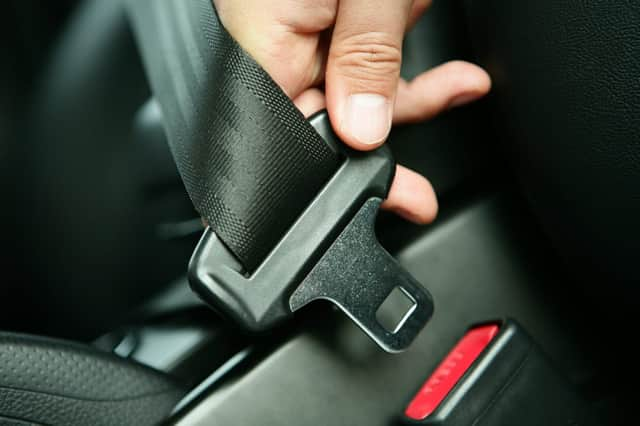Seat belt law: when you do and don't need one and the fines for breaking the rules


New data has revealed that almost a third of people killed in car crashes in the UK in 2018 weren't wearing a seat belt.
The figures obtained from police forensic investigators also showed that there has been a six per cent increase in the number of "unbelted" fatalities in two years.
Advertisement
Hide AdAdvertisement
Hide AdSeparate research by road safety charity Brake last year found almost half of young drivers had been in a car with someone not wearing a belt in the previous 12 months.


Wearing a seat belt has been compulsory in the UK for drivers and front seat passengers since 1983 and for rear seat passengers since 1991 (1989 for under-14s). Failing to obey the law carries a £100 fine - or up to £500 if you’re taken to court. There are also moves to add penalty points to the punishment in England, Scotland and Wales. The offence already carries a three-point endorsement in Northern Ireland.
Although the regulations state that you must wear a seat belt, there are certain exceptions to the rules so here we break down exactly what the law says.
When you must wear a seat belt
You must wear a seat belt in cars, vans and other goods vehicles if one is fitted. Adults, and children aged 14 years and over, must use a seat belt, where fitted, when seated in minibuses, buses and coaches.
Advertisement
Hide AdAdvertisement
Hide AdThere are, however, a few exemptions. You don’t need to wear a seat belt if you’re:
a driver who is reversing, or supervising a learner driver who is reversingin a vehicle being used for police, fire and rescue servicesa passenger in a trade vehicle and you’re investigating a faultdriving a goods vehicle on deliveries that is travelling no more than 50 metres between stopsa licensed taxi driver who is ‘plying for hire’ or carrying passengersYou have a medical exemption from your doctor
You also don’t need to wear one if your vehicle did not originally come with seat belts, for example if it is a classic car built before 1965. In this instance you mustn’t carry children under the age of three and over-threes must sit in the back seats.
Children
Children under three must be seated in a suitable car seat with restraints. The only exception is when travelling in a taxi, when they do not need to be restrained.
Advertisement
Hide AdAdvertisement
Hide AdChildren aged 3-12 (or up to 1.35m tall) must use a suitable child restraint, such as a car seat with harness or booster seat. They may use an adult belt without a child seat in a taxi or minicab where no child restraint is available or for reasons of unexpected necessity over a short distance, or if two occupied restraints prevent fitment of a third.
Children aged 12 and up (or more than 1.35m tall) must wear a seat belt.
Who is responsible?
Adults and children over the age of 14 are responsible for ensuring they wear a seat belt. For children under 14, the driver is responsible.
This article first appeared on The Scotsman